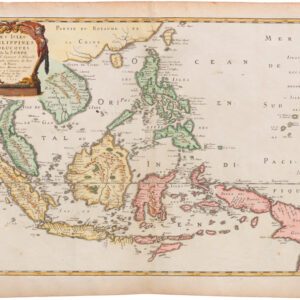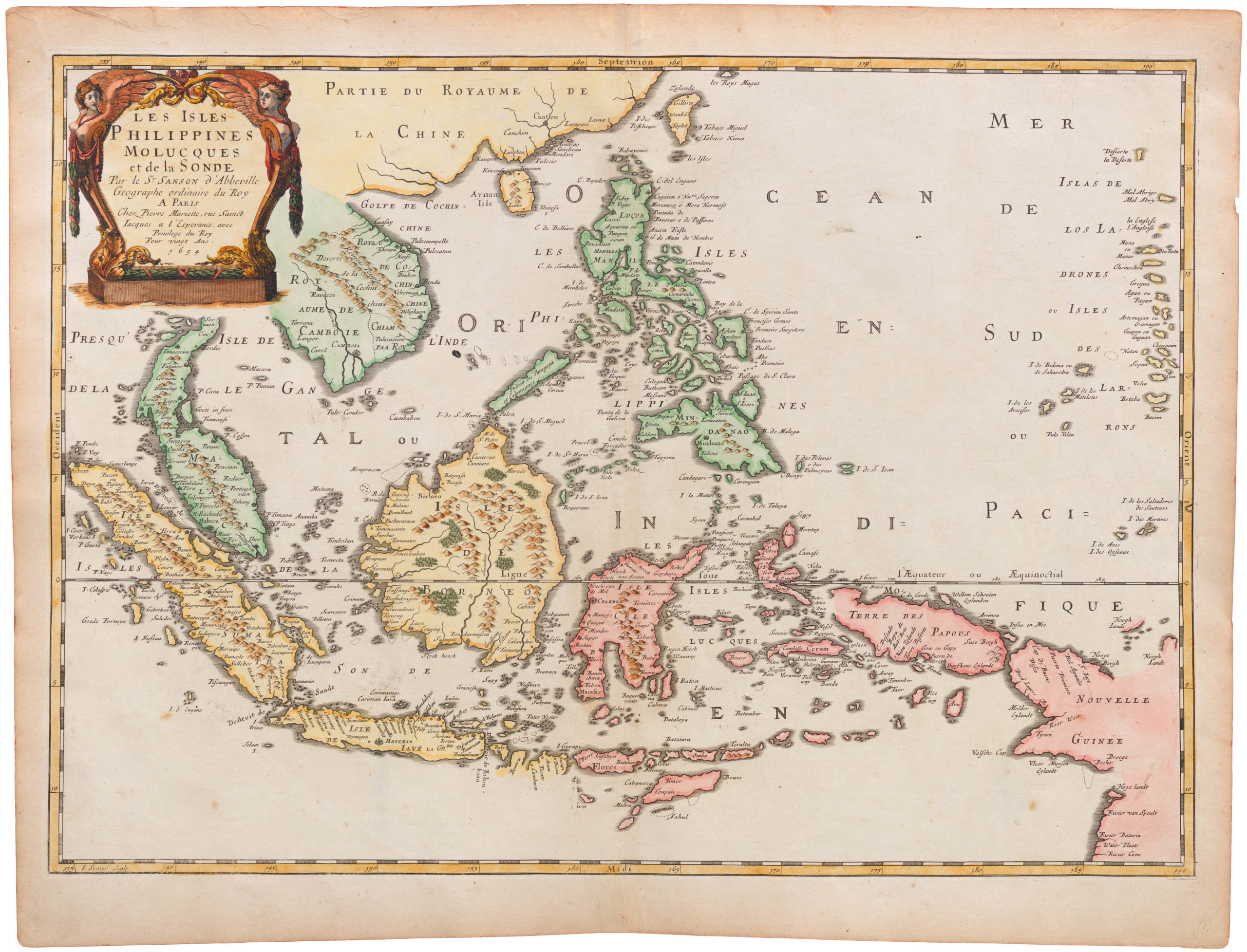French Indochina, on the road to independence.
Les États Associés d’Indochine.
Out of stock
Description
This map shows the major roads, railways, cities, and natural resources (forests, rice-growing regions, and minerals) of French Indochina. As is evident, French interest and investment in Indochina was primarily focused on two axes, one in the south around Saigon in Cochinchine and reaching up to Phnom-Penh, and one in the north around Hanoi and Haiphong. As anti-imperial sentiment increased in the first decades of the twentieth century, France tried to focus more on measures that would benefit the local population, such as improved roads and public health, especially under the left-wing Popular Front government of the late 1930s. However, harsh conditions for Vietnamese laborers, particularly on French rubber plantations, and the use of brutal policing methods to suppress independence activists more than offset these efforts.
Aside from the major cities of Hanoi, Hue, and Saigon in Vietnam, the map also shows Dalat, a colonial resort built for the French to escape the summer heat of low-lying regions. After decades of work, Dalat was connected by rail to the main north-south line connecting Hanoi and Saigon in 1932. Given the nature of the publication (Climats) where it appeared, this map can be seen as an attempt to cling to what remained of French colonialism and an early form of colonial nostalgia (the French population of Indochina, which was never that large and was mostly confined to Cochinchine, shrank considerably after World War II).
This map was made in the period between the end of World War II and the end of French colonialism in Southeast Asia. During the war, Japan had occupied French Indochina soon after France itself came under German occupation. Vichy-affiliated administrators and troops remained in place as the Japanese military was less interested in controlling Indochina than stopping its use as a supply route to China and to themselves use it as a staging area for more critical operations to the south. However, after France was liberated in 1944, the Japanese attacked the French garrisons in Indochina and established Vietnam, Kampuchea (Cambodia), and Luang Prabang (Laos) as independent kingdoms.
After the war, France ostensibly recognized the independence of Cambodia and Laos though they remained as French protectorates. The situation in Vietnam was more complicated because it was more economically and culturally significant for France, with Cochinchine (including Saigon) being a direct colony of the metropole, rather than a protectorate as Annam and Tonkin had been. Moreover, the Viet Minh movement, headquartered in Tonkin and led by Ho Chi Minh, had declared Vietnamese independence (forming the Democratic Republic of Vietnam) immediately after Japan’s surrender in 1945. Almost simultaneously, southern Vietnam was occupied by British troops awaiting the arrival of French soldiers from Europe while Chinese troops occupied northern Vietnam. The Chinese at first resisted French reoccupation of northern Vietnam but acquiesced once France relinquished all its claims on remaining treaty ports and concessions in China. The French moved to reoccupy northern Vietnam while undertaking negotiations with the Viet Minh, but hostilities broke out in late 1946, initiating the First Indochina War. As France fought a grinding counter-insurgency, it grudgingly offered concessions to the independence movement.
In 1948, a provisional government for Vietnam (including Cochinchine as well as Tonkin and Annam) was established. The following year, soon after this map was published, Vietnam was admitted to the French Union as an independent country, though it was still a tightly-controlled protectorate. The new state was beset by civil war and regional divisions and was dissolved by the 1954 agreement on the partition of Vietnam and a 1955 referendum dissolving the monarchy and establishing a republic.
Cartographer(s):
Climats (c. 1945 – 1955), variously titled Climats : hebdomadaire de la communauté française , Climats : hebdomadaire de l’Union française, and Climats : le grand hebdomadaire colonial; France et outre-mer., was a French periodical of the early postwar period focused on France’s overseas empire, which was undergoing rapid decolonization at the time.
Marcel DodemanMarcel Dodeman (fl. c. 1922 – 1954) was a French printer, publisher, and businessman. He was the President of SIRLO (Société d’Imprimerie de la Rue du Louvre).
Condition Description
Some visible offsetting.
References
![[Pair of views] Rade et Ville de Sincapour & Rade de Sincapour prise de la maison du Gouverneur](https://neatlinemaps.com/wp-content/uploads/2021/03/NL-00896-harbor_Thumbnail-300x300.jpg)
![[Pair of views] Rade et Ville de Sincapour & Rade de Sincapour prise de la maison du Gouverneur](https://neatlinemaps.com/wp-content/uploads/2021/03/NL-00896-harbor_Thumbnail.jpg)







